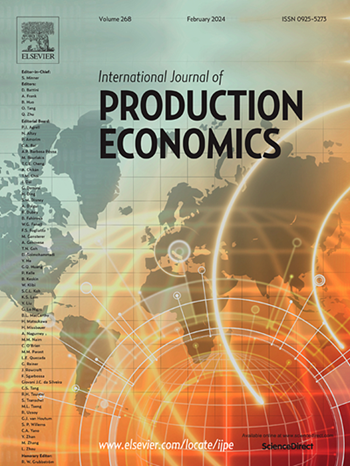Development of a cost-effective inspection scheme with adaptive lot-disposition mechanisms and a third-generation capability index
IF 10
1区 工程技术
Q1 ENGINEERING, INDUSTRIAL
引用次数: 0
Abstract
Acceptance sampling plans are regularly used for sampling inspections because they provide clear decision rules, enabling practitioners to sentence lots economically and efficiently. The multiple dependent-state sampling plan (MDSP) and repetitive group sampling plan (RGSP) have been developed using advanced sampling techniques. The former incorporates historical lot quality records into decision-making for lot disposition, and the latter employs a repetitive sampling mechanism. Researchers have combined these approaches into a more advanced inspection scheme, the modified RGSP (MRGSP). However, a detailed investigation and analysis identified three critical drawbacks of the MRGSP. These drawbacks include diminishing cost-effectiveness as a) more historical lot quality records are considered, b) lots with inferior historical quality records are repetitively sampled, and c) the number of repetitive samplings is not limited. This paper proposes an adaptive inspection scheme to address these deficiencies based on the third-generation process capability index, Cpmk, the combined adaptive multiple-dependent-state and repetitive group sampling plan (AMRSP). A detailed investigation revealed that the proposed AMRSP resolves the drawbacks of the MRGSP, is more cost-effective, and provides reliable protection for buyers and sellers. A case study demonstrates the practical applicability of the AMRSP, revealing that it can reduce the sample size by 25 %–56 % compared to the MRGSP, RGSP, and MDSP. It significantly enhances the efficiency of sampling inspections, which could be a motivation for promoting further industrial development.
开发具有自适应批件处置机制和第三代能力指标的经济有效的检验方案
验收抽样计划通常用于抽样检查,因为它们提供了明确的决策规则,使从业者能够经济有效地对批次进行判决。采用先进的抽样技术,提出了多依赖状态抽样计划(MDSP)和重复组抽样计划(RGSP)。前者将历史批次质量记录纳入批次配置决策,后者采用重复抽样机制。研究人员将这些方法结合到一个更先进的检测方案中,即改进的RGSP (MRGSP)。然而,详细的调查和分析确定了MRGSP的三个关键缺陷。这些缺点包括降低成本效益,因为a)考虑更多的历史批次质量记录,b)重复采样具有较差历史质量记录的批次,以及c)重复采样的数量不受限制。本文提出了一种基于第三代过程能力指标Cpmk、自适应多依赖状态和重复组抽样计划(AMRSP)相结合的自适应检验方案来解决这些缺陷。详细的调查表明,提出的AMRSP解决了MRGSP的缺点,更具成本效益,并为买卖双方提供了可靠的保护。一个案例研究证明了AMRSP的实际适用性,表明与MRGSP、RGSP和MDSP相比,它可以减少25% - 56%的样本量。它大大提高了抽样检查的效率,这可能是促进进一步工业发展的动力。
本文章由计算机程序翻译,如有差异,请以英文原文为准。
求助全文
约1分钟内获得全文
求助全文
来源期刊
CiteScore
21.40
自引率
7.50%
发文量
266
审稿时长
52 days
期刊介绍:
The International Journal of Production Economics focuses on the interface between engineering and management. It covers all aspects of manufacturing and process industries, as well as production in general. The journal is interdisciplinary, considering activities throughout the product life cycle and material flow cycle. It aims to disseminate knowledge for improving industrial practice and strengthening the theoretical base for decision making. The journal serves as a forum for exchanging ideas and presenting new developments in theory and application, combining academic standards with practical value for industrial applications.

 求助内容:
求助内容: 应助结果提醒方式:
应助结果提醒方式:


